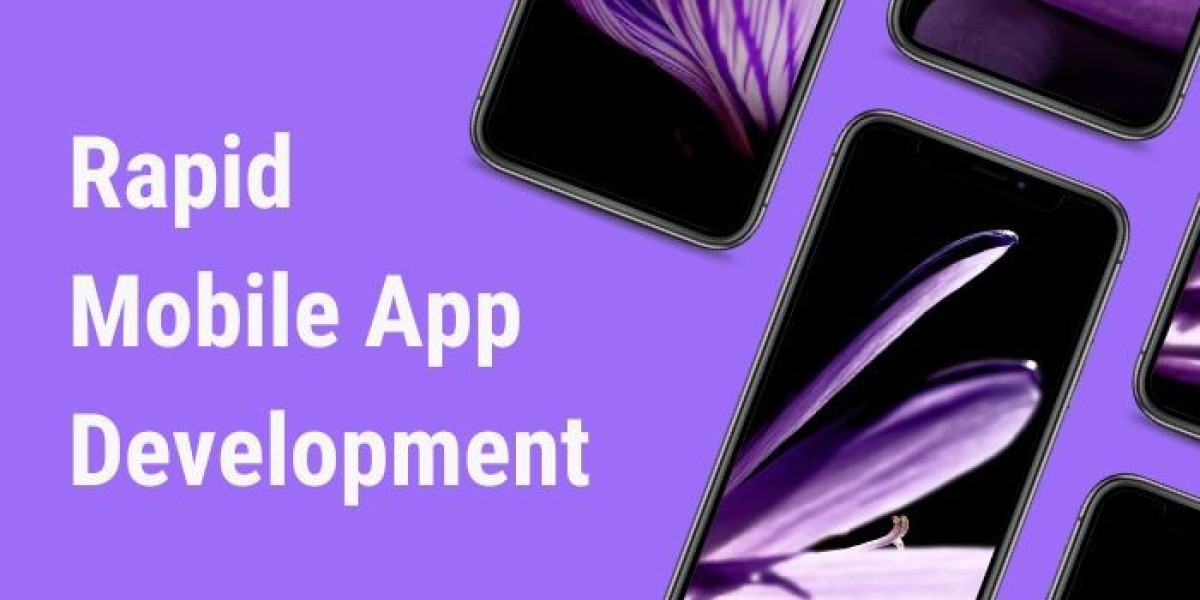The point is that we rely heavily on mobile apps to meet our diverse needs. The immense popularity of mobile apps highlighted a great path for businesses to show up in the palm of their users. But given the stiff competition, they can’t afford to miss out on a single chance.
This dire need to keep up with the increasing demand for innovative and user-friendly apps gave rise to Rapid Mobile Application Development (RMAD), which proved to be a game-changing approach. It represents a paradigm shift in the app development process, offering a streamlined way to develop mobile applications.
But, like any other development process, RMAD too requires investment. So it’s important for investors to know about its many benefits. This article covers RMAD basics including its features and benefits. It will give you a sneak peek into the transformative impact of RMAD on the app development landscape.
What is RMAD?
Rapid Mobile Application Development is basically the development counterpart of Rapid Application Development (RAD) which uses a set of tools, techniques, and processes to enable faster development of mobile applications.
Unlike conventional methods that involve lengthy cycles and complex coding, RMAD leverages tools like pre-built components and templates, integrated development environments, and GUI (Graphical User Interface) to accelerate the app creation process.
Some key features that define RMAD include:
? Low-code/No-code Platforms: A prominent feature of RMAD is involving as less coding as possible. So developers use low-code to no-code platforms which allow them to build mobile apps with minimal coding, significantly reducing overall development time.
? Pre-built Components and Templates: RMAD platforms often come with an extensive library of pre-built components which include navigation menus, several UI elements, forms, and database connectors. These ready-to-use templates and components can be easily integrated into the app, saving time and effort in development.
? Visual Development: Visual development is another core attribute of RMAD. Platforms meant for RMAD provide drag-and-drop interfaces and visual development tools that enable developers to create mobile app interfaces, workflows, and logic without writing extensive code.
? Cross-platform Development: Most RMAD platforms support cross-platform development, which allows developers to create mobile apps for multiple mobile operating systems including iOS and Android, from a single codebase. This helps investors to reach a broader audience and reduces the need for separate development for different platforms.
? Agile Development Methodology: RMAD typically follows agile development methodology. This means that the project is divided into smaller, manageable increments called sprints. This enables iterative development, continuous feedback, and faster delivery of working app versions.
? Integration Capabilities: RMAD platforms present developers with various integration options with different backend systems, APIs, and third-party services. This helps in connecting apps with databases, cloud services, payment gateways, social media platforms, and other external resources. It also helps in enhancing their functionalities.
KEY BENEFITS OF RMAD
RMAD offers certain key benefits to businesses and that’s the chief reason why it is quickly climbing the ladder of mobile app development services. So without further ado, let’s look at them.
? Faster Development and Shorter Market Time
This is the most obvious one, given that it has the word ‘rapid’ in it. The whole point of RMAD is to bring down the overall development time so that it can be deployed quickly and can reach its users within a short span of time.
RMAD, with its many tools and techniques, helps both developers and stakeholders achieve that objective in the most streamlined way possible.
? Cost Savings
Conventional app development methods often require a multidisciplinary team of developers, designers, testers, and managers. This means that organizations need to hire specialized developers or outsource the whole process.
But since RMAD facilitates less coding and goes low on technical expertise, enterprises can go on to hire mobile app developers who have limited coding experience. This also reduces dependency on external resources and the overall development cost.
? Better Collaboration
RMAD platforms often come with collaborative features and communication tools which encourage teamwork. This means that developers and designers can work together simultaneously. It also means that the teams can track progress, share feedback and iterate in real time, making for efficient development with seamless collaboration.
? Rapid Prototyping
We all know how important prototyping has become to do a quick cross-checking on the feasibility of app ideas in the practical world. Given the short development timeframe, prototyping becomes more crucial in RMAD.
Thanks to modern RMAD platforms, developers now have access to tools with which they can create prototypes and Minimum Viable Products (MVPs) really fast. This iterative approach allows investors to get quick user feedback and better validation and of course, a refined and improved application based on real users inputs.
? Flexible Development
Since RMAD is well aligned with agile development methodology, it enables developers to respond accordingly and quickly to changing requirements of their clients.
Thanks to the visual development tools, developers can make quick adjustments and modifications to the app’s design, feature, or functionality and ensures that it meets the user's demands.
? Easy to Maintain
We all know the importance of proper app support and maintenance which again becomes a simplified process with RMAD. Most RMAD platforms offer tools for app maintenance.
These tools help organizations manage app versions, fix bugs, and deploy updates. It ensures that the app remains updated and stable in its performance.
Take Away
In this era of digital transformation, where time-to-market and user experience are paramount, rapid mobile application development is proving to be a catalyst for businesses.
Undoubtedly, the benefits of RMAD are manifold. It helps organizations stay ahead of the curve, quickly adapt to evolving market trends, and deliver value to end-users with exceptional mobile experiences.
By reducing the time required for development, it also significantly cuts down costs, making app development more accessible to a broader range of businesses, including startups and small enterprises. But, while going for RMAD, it's also important to consider the complexity and scalability of the app being developed.
That’s why you need experts by your side. Hiring mobile app development services from a reliable firm seems like a good option, especially if you’re new to the game.



